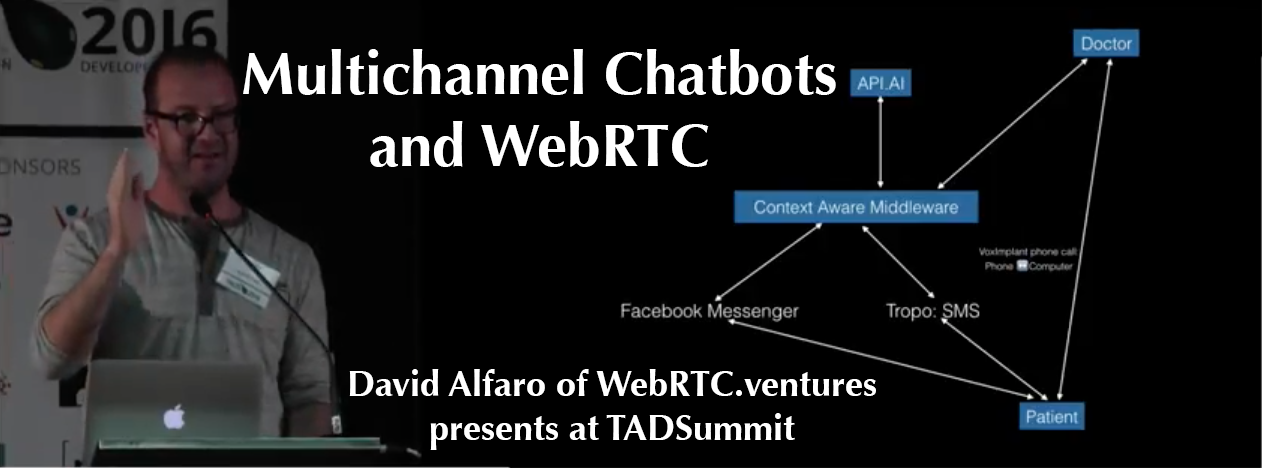Is your chatbot designed to be transactional or conversational? Multichannel or single channel? Social or functional? These are important questions to answer as you consider any sort of customer contact strategy involving text or video chat.
Last week, my business partner David Alfaro attended the TADSummit in Lisbon, Portugal, and presented the multichannel chatbot that a few members of our team built for the Global TADHack in October. As previously blogged about, our team won a couple of awards for this innovative combination of WebRTC video, SMS texting, and text chat to show how you might combine human and bot customer service in a telehealth application.
At the same time, I was in San Francisco to attend the KrankyGeek WebRTC Show. While there I also stopped by a chatbot meetup in San Francisco.
The meetup included an interesting panel discussion with 4 different representatives of chatbot platforms. One of the takeaways from the conversation for me was their definition of transactional vs conversational chatbots:
1) Conversational Chatbot – This is a chatbot mainly designed to engage with your customer or fanbase. It’s more social in nature, and the Facebook Messenger platform is a popular way to deploy the bot, but it may also be deployed on other social networks – wherever your followers are. Examples might include interacting with a celebrity or famous brand, and social interactions that unlock rewards or special content. The payoff of this bot is mainly engagement and brand awareness.
2) Transactional Chatbot – These chatbots are focused on more functional or utilitarian tasks. Getting flight status, order status, changing your order, or making an appointment are all examples. The goal here is to simply get something done more efficiently than a human customer service agent may do. These bots are possibly deployed on multiple channels, but it really depends on your customers and how they normally interact with you. You might integrate with Facebook, but you’re also likely to use the bot on text chat on your website, telephone, or SMS messaging.
David’s chatbot that our team demo’d at TADSummit is transactional, and multichannel. The most interesting part of the scenario he presents is that the chatbot’s status is maintained across the different channels. So a patient begins interaction with the doctor’s office over a social media chat or web chat, but then when they lose their internet connection the conversation is continued seamlessly on SMS and then transferred to a phone call with the doctor. Finally, an appointment is made for a follow up consultation via WebRTC video chat.
You can see David’s presentation at TADSummit below:
David also made an additional presentation at TADSummit on our experiences building apps on the bleeding edge of Telecom:
If you’re interested in deploying a multichannel chatbot combined with human interaction on WebRTC video, as part of your contact center or telehealth practice, then contact us! We’d be happy to apply our telecom and WebRTC knowledge to your web or mobile application.











